Get all of your questions about baking with coconut flour answered here! This instructional article takes the guesswork out of working with this unique ingredient, so you can make delicious keto treats any time.
Be sure to check out all of my keto coconut flour recipes!
Coconut flour is a popular keto ingredient that is now widely available at more grocery stores. It’s incredibly useful and makes some of the best low carb, grain free baked goods. In fact, my favorite keto chocolate cupcakes are made entirely with coconut flour.
But if you don’t know how to work with it, coconut flour can be difficult and sometimes very frustrating. It simply doesn’t behave like any other flour on the market, and many people make mistakes when working with it. And then they give up altogether.
I want nothing more for you to have success in keto baking, which is why I put together this primer on baking with coconut flour. Because knowledge is power, my friends!
So let’s start at the very beginning, shall we?
Jump to:
- What is coconut flour?
- Benefits of coconut flour
- Replacing wheat flour with coconut flour
- Replacing almond or other nut flours
- Does coconut flour really need all those eggs?
- Does it taste like coconut?
- Different brands of coconut flour
- What is the best use of coconut flour?
- Coconut Flour Blends
- Where to purchase coconut flour
- How to store coconut flour
- Conclusion
- Coconut Flour Recipes
What is coconut flour?
Coconut flour is actually the by-product of coconut milk production. After they extract the coconut milk, the leftover coconut meat is dried at low temperature for a long period of time, and then finely ground.
The result is a fine, powdery substance that resembles wheat flour in appearance, but smells distinctly of coconut.
The most distinctive characteristic of coconut flour is the rather astonishing way that it soaks up moisture and liquids. In this it differs from all other flours, gluten-free or otherwise. It’s like a sponge in powder form, taking in a remarkable amount of eggs, oil and other wet ingredients, and still staying as thick as porridge until it finally reaches saturation.
On the other hand, if you add too much liquid, you end up with a soggy baked good that won’t cook through. It’s a fine balance.
Don’t panic! Baking with coconut flour isn’t quite as unforgiving as it sounds. It does take some getting used to, however. I recommend starting with tried and true recipes until you have a feel for it.
Benefits of coconut flour
Coconut flour is something of a nutritional powerhouse. Compared to wheat flour and nut flours, it is:
- High in fiber
- Low in carbohydrates
- Low in calories
- Completely gluten free and grain free
- Low in fat (compared to other keto flours)
- Low in omega 6
- Contains lauric acid, which may help fight infection
- Contains potassium
Additionally, coconut flour is quite inexpensive. This is particularly true since you use quite a bit less of it for baking than any other flour. A 16 ounce bag of coconut flour costs about $4 and can make 5 to 6 different recipes!
Replacing wheat flour with coconut flour
There really is no perfect formula for subbing coconut flour for wheat flour since it depends on what you are trying to make. Cakes and muffins, which need to be light and fluffy, will be very different than something more dense, like cookies.
But when working with coconut flour, you always need to decrease the flour and increase the eggs and baking powder.
For example, conventional pumpkin bread takes 2 cups of wheat flour, 2 eggs, ½ cup butter or oil, and 1 ½ teaspoons of baking powder.
My keto pumpkin bread takes ¾ cup of coconut flour, 4 eggs, 2 egg whites, ⅓ cup of butter or oil, and 2 full teaspoons of baking powder. Plus I always add some protein powder to help coconut flour recipes rise and hold their shape better.
Replacing almond or other nut flours
Again, there’s no easy formula here as it depends heavily on what you want to make. But this is a little easier since they are both keto and gluten-free to start with.
If I rework one of my own almond flour recipes, I do something like this:
- ⅓ cup of coconut flour to every cup of almond flour
- Triple the amount of eggs
- Baking powder remains the same
- Protein powder remains the same
- Oils and liquids are about the same
From there, I adjust accordingly. If my batter seems to thick, I add additional liquid, one tablespoon at a time. If my batter is too thin, I add more coconut flour, one tablespoon at a time.
The reality is that experience and gut instinct helps a great deal. Knowing what the batter should look like comes with time so again, I recommend finding tried and true coconut flour recipes to start with.
Does coconut flour really need all those eggs?
Yes, yes it does. Don’t try to skimp on them or you risk recipe failure!
When I first started baking with coconut flour, I was shocked to learn that many recipes require 6 to 12 eggs. But trust me, those eggs are vital for giving your baked goods proper body and structure. Every time I’ve tried to cut back on the eggs, I’ve regretted it.
Coconut flour is remarkably absorbent and will soak them all up, and then some. The results aren’t eggy or rubbery. In fact, they often look and taste just like conventional baked goods.
Sadly, I have not had any luck with egg replacers at this point. They simply don’t give coconut flour enough structure.
Does it taste like coconut?
Coconut flour definitely has a strong flavor and some baked goods can taste very coconutty, if there are no other flavors to compete with it.
But if you dislike coconut, all is not lost!
I find that chocolate, cocoa powder, and coffee can help mask the coconut taste for cakes and muffins. Other extracts and flavors, like citrus, can help too.
For savory recipes, a little garlic powder helps mask the coconut flavor. And if you make fathead dough with coconut flour, the cheese overpowers it completely. Many readers say that they can’t taste it all in my Chewy Keto Bagels!
Alternatively, if you do like the taste of coconut, you can bring it to the forefront with coconut oil and some coconut extract.
Different brands of coconut flour
One of the issues when baking with coconut flour is that different brands vary in consistency and absorbency. And of course this has an impact on your baked goods.
I have two brands I use and like: Bob’s Red Mill and King Arthur Baking. These are two of the most reliable baking companies in the US and I turn to them for many ingredients.
But I find that they do differ from each other. King Arthur coconut flour is lighter in color, tends to clump a bit, and seems to require less liquid than Bob’s (i.e. less absorbent). It’s not hard to accommodate these differences, though. I sift the King Arthur flour, whereas I don’t need to with Bob’s. And I hold off on extra liquid until I see what the batter looks like.
Always be sure to read the recipe carefully and look for the visual and tactile cues. I try to specify what the batter should be like in every recipe so that readers can adjust accordingly.
What is the best use of coconut flour?
Coconut flour is wonderful but it’s not perfect, and it doesn’t work for every recipe. In my experience, it’s best suited to some baked goods and not to others.
I think it really shines in keto cakes and muffins, because it gives them a light, fluffy consistency. It’s also good in recipes that are meant to be more dense, like coconut flour brownies.
But in recipes where you want a crisper texture, like cookies and keto shortbread, it fails miserably. Because it requires eggs to hold together properly, cookies end up too soft and moist.
If you are new to working with it, my coconut flour pancakes are a great place to start. It will give you a sense of how coconut flour works, and the batter can easily be adjusted as you go.
But I don’t think it works well in baked goods that require a crisp texture, like cookies.
Coconut Flour Blends
You can also blend coconut flour with other keto flours – it doesn’t need to be an all or nothing proposition.
Some of my most popular cakes are made with a combination of almond and coconut flour, as I find it improves consistency. The dryness of the coconut flour offsets the moisture and fat in the almond flour. It can also help lower the carb and calorie count.
For a recipe such as my Keto Texas Sheet Cake, I use 2 cups of almond flour and ⅓ cup of coconut flour. This ratio works well and gives the cake a finer crumb.
I also like to combine the two flours in keto scones, to give them right dense, slightly crumbly texture. And keto breads, such as my famous keto focaccia bread, benefit from a flour blend as well.
Where to purchase coconut flour
Keto and grain free diets have exploded in popularity in the past few years, and coconut flour is available in most grocery stores. It’s usually carried in the gluten-free or natural foods aisle, but sometimes it’s in the baking section.
You can also easily purchase coconut flour from online sources such as Amazon.
How to store coconut flour
Because coconut flour is so absorbent, it’s important to keep any open bags wrapped up tightly. This is particularly true if you live in a humid environment.
I prefer to keep it at room temperature, rather than in the fridge or freezer. Since it has a low fat content, it won’t go rancid or spoil easily, and it’s harder to work with when it’s cold. I only recommend freezing it if you have purchased in bulk and won’t go through it within 6 months.
The new Bob’s Red Mill bags have a great velcro-like seal at the top so I simply keep my coconut flour in the bag, tightly sealed.
Conclusion
I hope that helps to answer some of your most basic questions about baking with coconut flour. It may seem daunting at first, but after working with it, I think you will find that it’s not as tricky or as unforgiving as it sounds.
Coconut flour is definitely an ingredient worth adding to your repertoire. If you have a question you don’t see answered here, don’t hesitate to let me know!


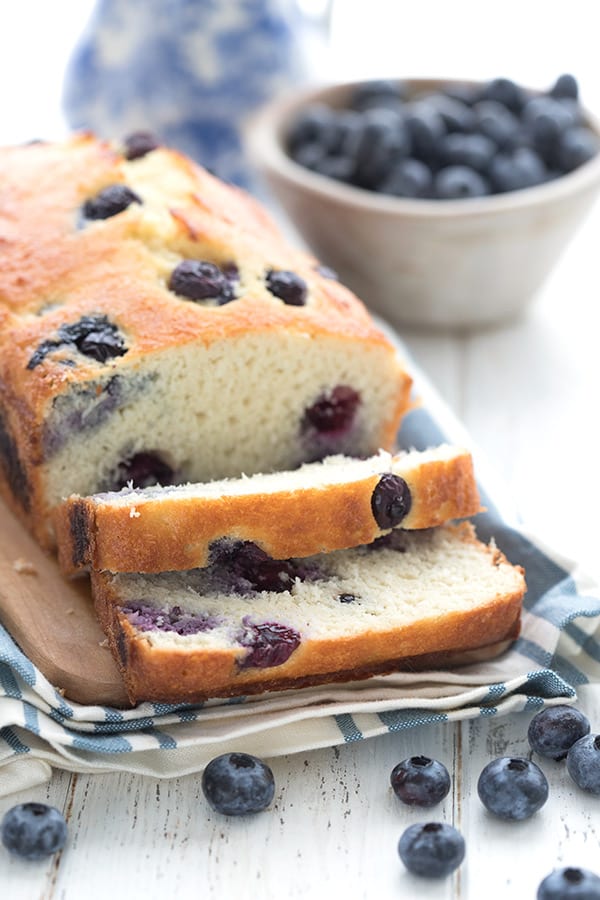
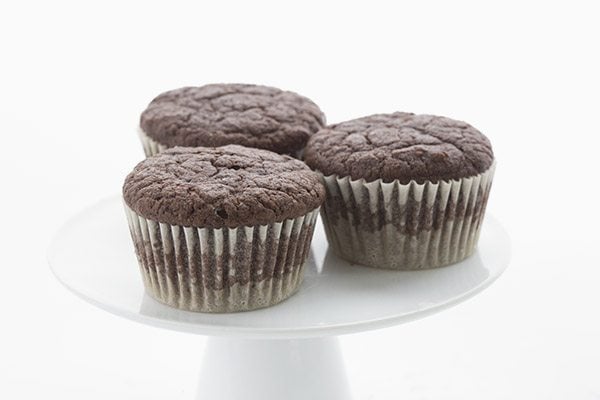

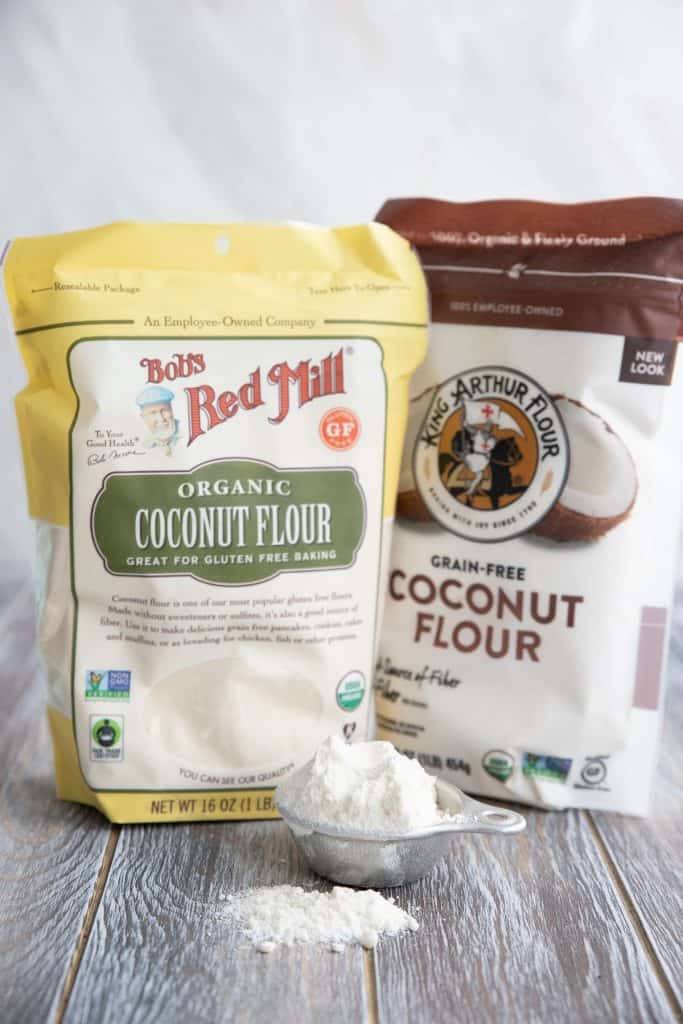

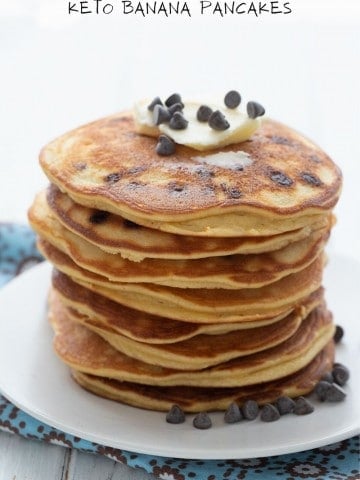
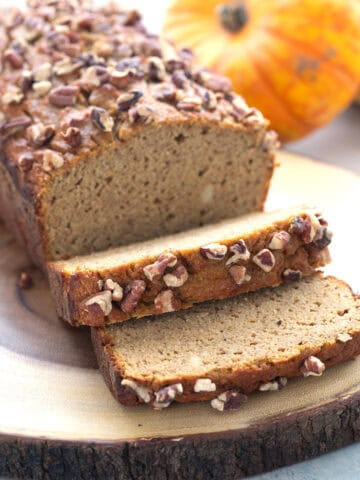


Michelle L says
I am sure that these “how to” posts take a lot of your time but I for one appreciate them. I have cooked with coconut flour and almond flour for probably 5 years now, ever since I was diagnosed with Type 2 but I still learn something from your posts. And I love, love your recipes! I only wish I had time to experiment and I thank you for taking time to do so and then write about it.
Diane {Created by Diane} says
Everyone I run into that says they need options for baking, I send them to you. I love that it all looks as yummy and that people can make low carb items at home!
Oh and the cake, YUMMY!!!!!
Sommer @ ASpicyPerspective says
Excellent post, Carolyn. Thanks for sharing!
Brooks says
Carolyn, this is a spot on article covering the basics of coconut flour. As one who manipulates traditional wheat flour most days, I’m quite intrigued by this variety and it compels me to get working with it. Thank you for sharing your knowledge and practice with this medium. From the looks of things, you’ve been doing some happy baking!
Stacy | Wicked Good Kitchen says
Excellent article on coconut flour pertaining to low carb and grain free baking, Carolyn! Grain free baking is indeed an entirely different animal and even more challenging than gluten free baking (with grain flours). Best tip for newbies was your suggestion to start with something like pancakes so the batter can be adjusted without the entire batch of batter being tossed and to use tried and true (well tested) recipes. Bravo! P.S. You are so right. Non recipe posts (such as tutorials, etc.) with all the research, writing and editing takes a significant amount of time.
Jen @ Savory Simple says
I love using coconut flour but it’s been hit or miss for me. Sometimes it’s perfect, other times (like the last time I tried using it in muffins) the results are way too dense. This is a very helpful post!
amanda says
Great post! Nuts.com has an excellent coconut flour, as well as almond and peanut and flax and chia and so much others stuff. They have become my one stop shop for that stuff
Stephanie @ Eat. Drink. Love. says
I’m really glad you posted this, I have been so curious to try baking with coconut flour!
Roxana | Roxana's Home Baking says
Great article Carolyn. I have a bag of coconut flour in the fridge (will have to take it out in the morning, now that I know better) but have been a little intimidated by it, ruining a couple of recipes.
Next time I’ll have to add some more eggs, thanks for the tips!
Kim - Liv Life says
I’ve yet to enter the realm of coconut or actually any nut flours, though I do have a package of recently purchased almond flour in my pantry. I watched part of your coconut video, and you all have so much info. Not sure I’m ready for it yet but I’m keeping this post handy for when I am!!
Your photos btw are beautiful!
Connie says
Hi! I have lost over 80lbs with low carb and this post is very helpful. I am a professional pastry chef and have not played much with coconut flour. I just omitted baked goods from my diet the last year. I am looking forward to trying coconut flour baked goods now that I can introduce more carbs into my diet. Thanks for the great post.
Carolyn says
As a pastry chef, I think you will find it really strange at first, but as you get used to it, I bet you will come up with some amazing creations!
Georgiana says
Congratulations on the loss of the 80 lbs.!!!!! Several of my family members also keep the carbs very low and I too do also. I am interested in experimenting with the coconut flour and would be interested to hear from others doing the same thing.
Kim @ Hungry Healthy Girl says
Coconut flour is definitely tricky. Thanks for all of the great tips! I love your coconut flour blueberry waffles and I also like adding about a tablespoon of coconut flour to smoothies.
Jeanette says
Great information Carolyn – coconut flour has been the trickiest flour I’ve worked with so far, and it’s been fun experimenting with it.
Carolyn says
I would have linked to our google + video except that a) I don’t know how and b) the video and audio on my end was atrocious! I am getting a new webcam and I hope that fixes those issues!
Anne @The Cooking Campaign says
Thanks so much for sharing! We just found out that someone in our family has a gluten allergy, so I’m always looking for new flours.
Alison @ Ingredients, Inc. says
great info! I needed this!!
Georgia @ The Comfort of Cooking says
Thanks for the helpful tips, Carolyn!
Vanessa says
I know that oat fiber performs very similarly to coconut flour. What are the differences between the two? Or are they pretty interchangeable?
Carolyn says
They are similar when in the bag, but I wouldn’t use them completely interchangeably. For one, coconut flour tastes way better than oat fiber. I’d only ever add oat fiber to a recipe in combination with other things, never on it’s own. The other thing is that coconut flour is still much more absorbant than oat fiber. I’d use about 1/3 less coconut flour than oat fiber.
Kerry Carr says
I was wondering if you have any experience baking with plantain flour? I have a bag of the flour but I am having a hard time finding recipes or ways to use it.
Thanks
Kerry
Carolyn says
Wow, I’ve never even heard of it. But plantains are pretty starchy so not really something I could eat. Being starchy, I imagine you could use it similarly to bean flour or potato flour though.
Joshua Hampton (Cooking Classes San Diego) says
This is the first time I’ve heard of coconut flour and its uses. I learned something new and useful today, thanks to your post. Now, off to experimenting with coconut flour.
Jamie | Thrifty Veggie Mama says
Great post! I am new to baking with coconut flour but really like it!
Judith says
I’m new to gluten free, ran across a recipe for cookies in Organic Gardening
that used coconut flour. The article actually was featuring honey production and
cooking with honey. I baked them this morning. Delicious. They were fragile however,
perhaps needed another egg or two…